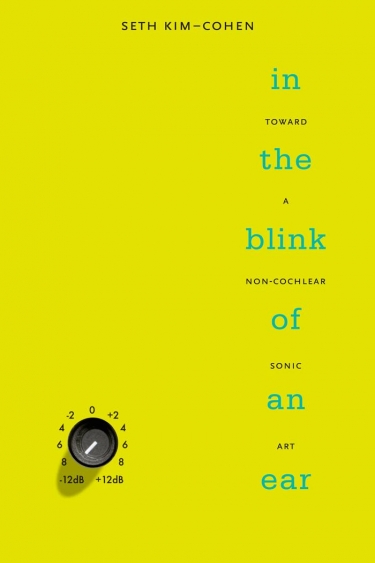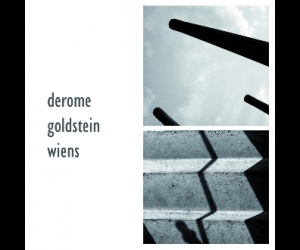
It’s happened more often than I’d like to admit that I will read the artist statement of a sonic work and be disappointed in its dated ideas. The odd time I’ve ever engaged in debate with a sonic artist I have usually been astonished by the gulf between current visual art theory and behind-the-times sonic theory.
Seth Kim-Cohen’s In the Blink of an Ear sets outs to frame a productive and ongoing dialogue on sonic theory. “Unlike what we have witnessed in gallery arts,” explains Cohen at the end of chapter three, “The perception of Primacy,” “Much practice in the sonic arts has maintained a deeply instantiated resistance to the textual, the grammatological, the conceptual . . . many sonic practitioners continue to find solace in the naturalism of sound.”
To arrive at this point Cohen begins the book in 1948, comparing in a linear fashion Greenbergian high modernism as abstract expressionism, or painting for the sake of painting, to Pierre Schaeffer’s musique concrète, showing the similarities of their essentialist positions along the way. The other two luminaries featured are John Cage and Muddy Waters.
Admittedly, for the first two chapters I found the heavier concentration on the development of the gallery and visual arts a bit puzzling, but the intentions became more apparent. After setting the scene, a highly philosophical dialogue carries the rest of the book as Cohen suggests that the sonic arts can be furthered through an understanding of phenomenology in the Derridian sense (the expanded situation of sound as text). Easing into this idea with Robert Morris’ Box with the Sound of Its Own Making, (1961) and its relevance to Cage’s sound-in-itself priorities, Cohen insists that Cage’s preoccupation with score and traditional musicality is reductive, and while it’s a bold statement, his points are well articulated. Cohen hails conceptual and minimalist work for achieving release from primordiality by “putting the eyes in their place” through embracing the non-retail as Duchamp had done. Cohen takes on the daunting task of doing the same for the ears, suggesting that the listener not listen to something, or at something, but to listen about something.
Many of the examples and histories cited are fascinating to read and illuminating. The book succeeded in leading me out of my preconceived notion of sound. Despite revisiting several canonical works (from gallery arts and experimental music and rock), Cohen is able to seamlessly pivot these works on different events, over a nexus of ideas from sonic and visual studies, creating engaging and stimulating new dialogue. A title recommended for those with not only curious ears, but open minds.


